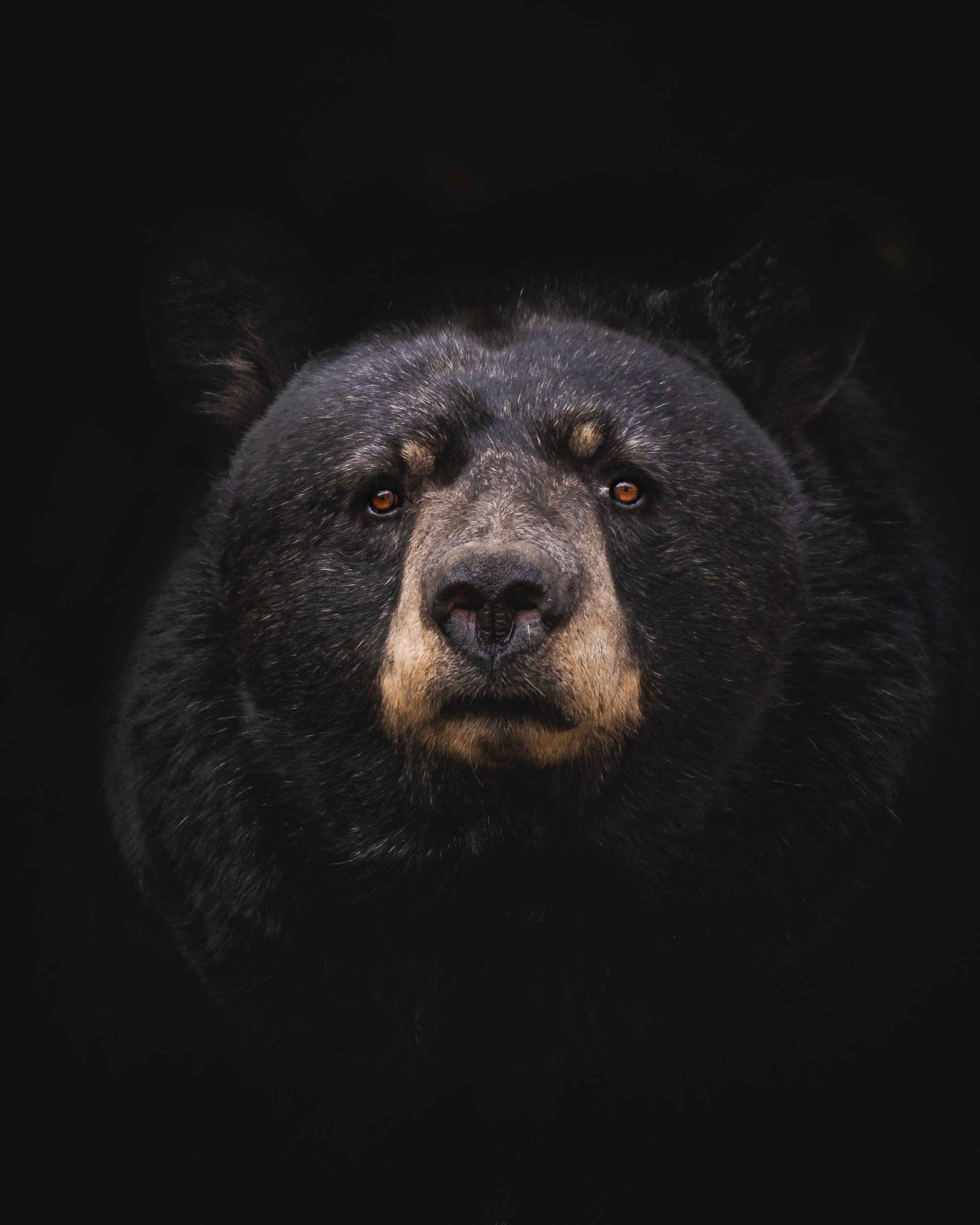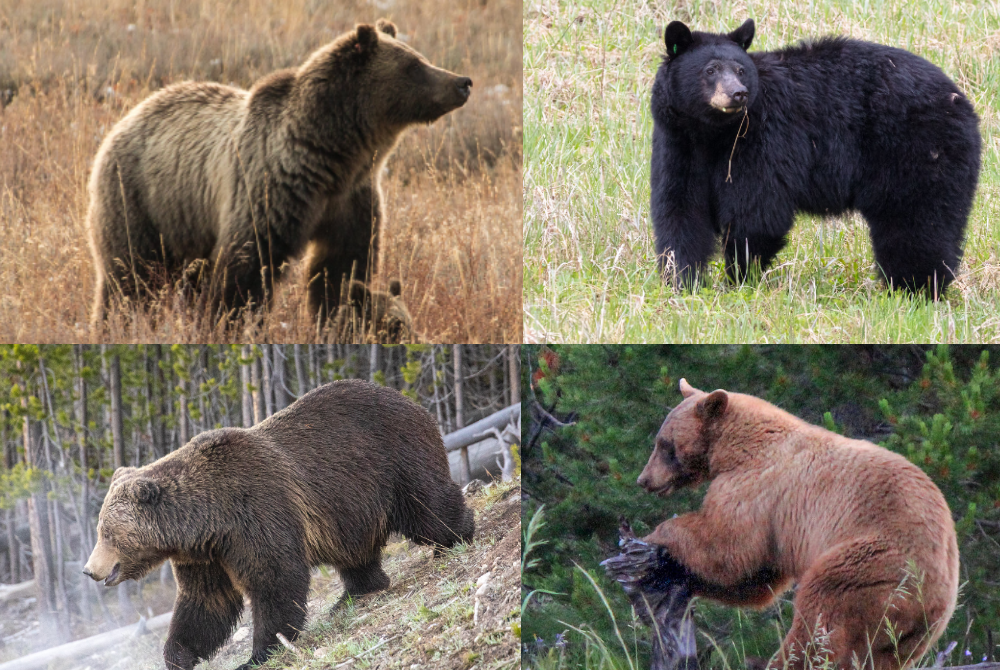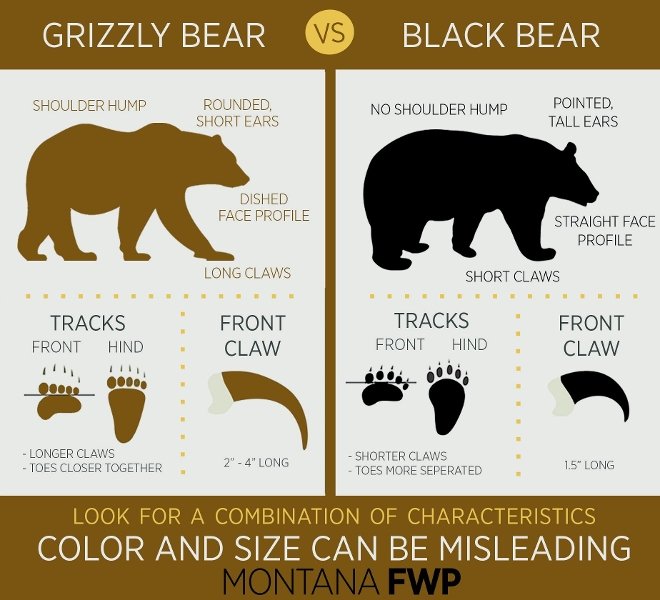
Identifying Grizzly Bears and Black Bears
Black bears and grizzly bears are icons of the Greater Yellowstone Ecosystem. They are part of what makes this wild landscape so extraordinary.
Seeing a bear in the wild is exciting, but it is important to remember that bears are wild animals and are not safe to approach. If you encounter a bear during your time in the Greater Yellowstone Ecosystem, knowing the difference between black bears and grizzly bears can help you make safe decisions.
How to tell the difference between a grizzly bear and a black bear.
There are a set of physical characteristics you can use to identify a black or grizzly bear. It’s important to look for a combination of these characteristics and not rely on one alone. Relying on size or color as an indicator can be misleading.
Shoulder Hump
Grizzly bears (left) have a distinctive shoulder hump between the front shoulders that is absent in black bears (right).
Ear Shape
Grizzly bears (left) have smaller, more rounded ears. Black bear (right) ears appear larger, longer, and more pointed.
Facial Profile
Grizzly bears (left) typically have a concave or dish-shaped facial profile that extends between its eyes and the end of its nose. Black bears (right) normally have long, relatively straight facial profile from forehead to nose tip.
Color
Color is not a good indicator of the type of bear and should not be used as the only characteristic when determining the type of bear you are looking at. Not all black bears are black; black bears (top right, bottom right) can be brown, cinnamon, blonde, or a combination of colors. Grizzly (top left, bottom left) coats also vary in color.
Size
Just like color, size is not a reliable indicator for identifying bears. Size depends on sex, age, and physical condition, so there is often overlap in the size of grizzly (left) and black (right) bears. Plus, when you are judging a bear from a distance, it can be nearly impossible to determine size and weight accurately
Tracks
The front foot of a grizzly (left) tends to look more square than a black bear that appears rounded. If you draw a straight line across the top of the foot pad, the line will not intersect the toes of a grizzly bear.
A straight line drawn across the top of a black bear (right) front paw pad will intersect the toes. Additionally, grizzly bears have longer claws, so middle claw marks will be 2 to 4.5 inches from the ends of the toe pads. Black bear middle claw marks will be 1 to 2.5 inches from the end of the toe pads.







